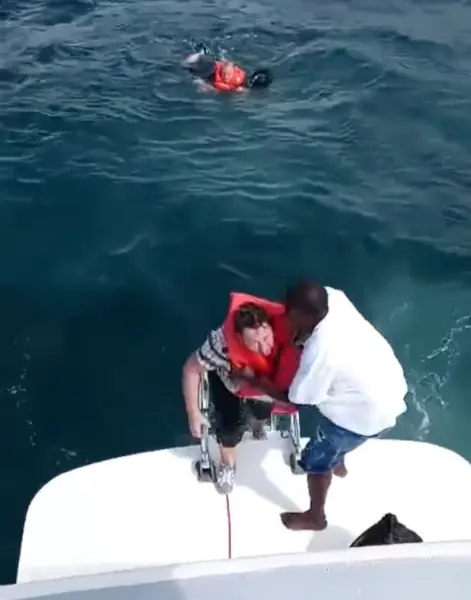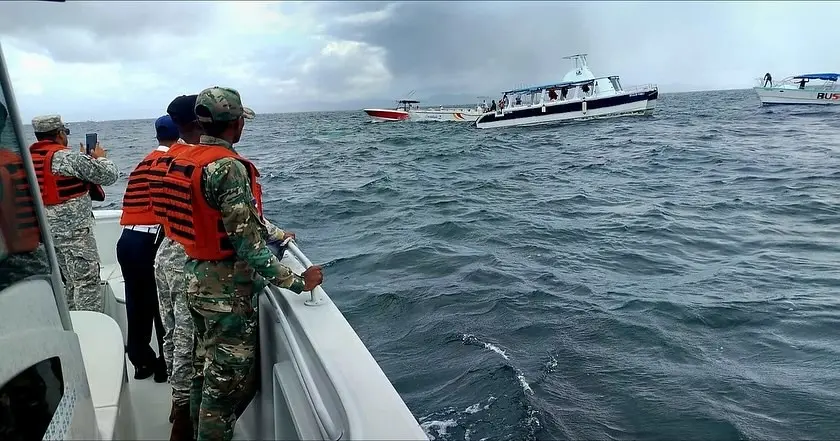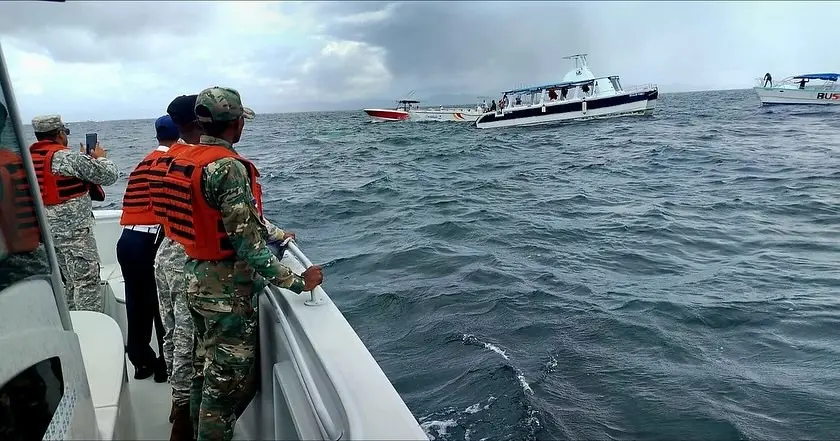Dozens of Cruise Passengers From Mein Schiff 1 Left Stranded at Sea After Day-Trip Catamaran Sinks in Samaná Bay
On Sunday afternoon, November 9, 2025, an outing that had promised sunshine, turquoise waters and carefree cruising in the Caribbean turned into a tense rescue operation in the waters of the Dominican Republic. A 40-foot catamaran named Boca de Yuma, carrying approximately 50 to 55 passengers from the cruise ship Mein Schiff 1, sank off the coast of Samaná Bay after the vessel sustained a hull breach and began taking on water.

The excursion had departed from Embat Pier in the province of Samaná, with tourists from the Mein Schiff 1 eager to explore a scenic coastline and enjoy what should have been a picturesque day at sea. Instead, the mood shifted swiftly when the catamaran’s hull developed internal damage and began flooding. The written statement issued by the Dominican Navy cited “internal hull damage” as the critical issue, causing rapid flooding and capsizing of the vessel.
Eyewitness accounts describe a sudden turn of events. Passengers were reportedly wearing life jackets—as required—and as the water invaded the lower deck of the catamaran, the craft tilted and eventually sank. Some onlookers captured footage of people bobbing in the open sea, waiting for rescue, while others clung to the remaining structure of the sinking vessel. The quick actions of crew, nearby boats and the Dominican Navy prevented the tragedy from escalating into a major loss of life. The Navy confirmed that all passengers and crew were rescued and safely returned to the Mein Schiff 1.

In its response, the cruise line operator TUI Cruises acknowledged the incident in a statement, noting that the catamaran was operated by an external provider. The statement said that, “according to the available information, there was a collision with an object in the water” which may have caused the hull breach. While all guests were safe, the company said it was working closely with local authorities to investigate the precise cause and ensure guest safety in future excursions.
Beyond the immediate rescue, the incident raises broader concerns about the safety of excursion-style vessels used during cruise itineraries—especially in regions where shoreside and offshore logistics may differ starkly from the main cruise operations. Tour operators, third-party providers and port authorities each have roles in ensuring safety standards are met. In this case, investigators noted that the vessel had recently passed inspection, which raises questions about wear, maintenance and operating conditions at sea.

For the passengers aboard the Mein Schiff 1, the emotional experience of what should have been a leisure adventure transformed into an unexpected emergency. While no fatalities were reported, some passengers sustained minor injuries and experienced shock from the ordeal. Counselors were reportedly made available on board once the group returned to the cruise ship. TUI Cruises’ statement confirmed that affected guests were offered pastoral care and compensation.
The location of the incident—Samaná Bay—is famed for its scenic beauty and tourist activity, including whale-watching, national park visits and catamaran excursions. But it is also subject to maritime risks that can increase when tourist vessels take shortcuts or operate outside ideal conditions. The incident underscores the point that scenic extravagance does not exempt an excursion from rigorous risk assessment.
In the aftermath, maritime officials in the Dominican Republic have said they will investigate thoroughly. The Samaná Port Authority has been tasked with reviewing maintenance logs, operating protocols and the chain of command that allowed a hull breach to bring a tourist vessel to the brink of disaster. Standard procedures will be evaluated—whether weather played a role, whether the vessel struck debris or whether fatigue or structural weakness was at fault.

For the cruise line industry, the incident is a reminder of how vulnerable downstream excursions can be. Cruise companies often cite the excursion providers as separate entities, yet the reputational and safety risks of these providers reflect on the cruise brand. In this case, the guest feedback, media scrutiny and regulatory attention will likely lead to tighter oversight of shore excursions and better alignment between cruise ship operators and local tour fleets.
From the human perspective, the relief felt when every passenger was accounted for cannot be understated. What could have been a deadly event ended with safe rescue thanks to life jackets, rapid communication and nearby vessels responding. The photos of passengers clinging to floatation devices and navigating to rescue boats are a stark visual contrast to the laughter and leisure typically associated with a Caribbean cruise.
As the Mein Schiff 1 resumed its journey, the incident still cast a shadow. Passengers no doubt reflected on the fragility of travel despite the luxury of a large cruise ship. The catamaran, which once held promise of fun and exploration, became a floating hazard. For those aboard, the maritime gamble—however small the risk—became real.
Regulators now face a decision: will this incident prompt new regulations for excursion craft operators? Will cruise lines impose stricter approval and certifications for third-party vessels? Will guests begin asking more questions about the safety record of the “fun day” boat waiting for them at port? All of these issues hang in the balance as the investigation continues.
Meanwhile, in the wider travel community, stories like this one may influence the perceived risk of shore excursions in exotic destinations. Travelers value the experience, but often take safety for granted. The Boca de Yuma incident challenges that assumption and compels every traveler to ask: who is responsible for my safety once I leave the cruise ship?
The rescue itself, while successful, does not erase the hazards of operating in open water. Life jackets, trained crew, immediate distress signaling and a nearby response fleet all played roles in preventing loss of life. But the cause remains to be fully determined—and until it is, the incident will serve as an important case study in excursion safety.
For the local tourism economy in Samaná, the incident may prompt both caution and opportunity. On one hand, tourism providers will need to rebuild confidence; on the other, clearer standards and visible safety measures may become a market differentiator. The Dominican Republic may leverage the investigation results to bolster its reputation for safe, well-regulated maritime tours.
Ultimately, the story remains one of escape—not just from water, but from what could have been catastrophe. As the sun set over the rumpled sea on that November afternoon, the passengers stepped from the rescue boats back onto the big cruise ship, shaken but alive. The catamaran lay submerged, its tour over, its promise forgotten. In its place remains a reminder: every moment of leisure still carries an element of risk, and safety must remain the foundation beneath the waves.


